From Darrington, drive Hwy-530 6.5 miles north to a bridge over the Sauk River. Once over the bridge, stay straight. You are now on FR 26. Drive this road along the Suiattle River for 19 miles to Green Mountain Road (FR-2640), which cuts off to the left and climbs for 5.5 miles to the trailhead. Be sure to check with the Darrington Ranger Station, the Suiattle River road is notorious for washouts.
Green Mountain
Distance: 4 miles
Elevation Gain: 3,000 feet
Summit Elevation: 6,500 feet
Access: Good Gravel
Washington Lookouts
Route:
Green Mountain offers a relatively easy trail hike to a mountain top with outstanding views. Some great peaks are visible from the summit like Snowking, Chaval, White Chuck, Pugh, Sloan, Glacier and Dome Peak. Even the mountain lives up to it's name as it is quite green when you reach the open meadows. This is one of those hikes you take out of town visitors on. Although the lookout is used for administrative use (radio equipment), a program is available which allows the building to be open and staffed by volunteers on weekends in the summer.
Just a trail to follow up to the summit. It starts out in forest but transitions into open meadows. The trail passes two small lakes higher on the mountain, each have a few tent spots. There are also a few tent spots on the exposed ridge near the summit just as the trail crests the highest ridge below the lookout.
Access:
Small lake along the trail
Summit in 2004 when the lookout building was gone.
Forest fire during 2004 visit
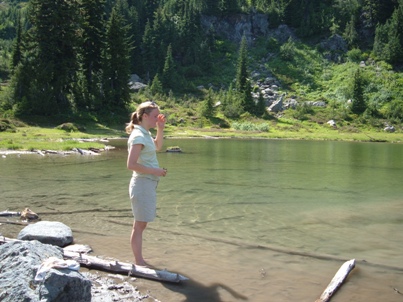
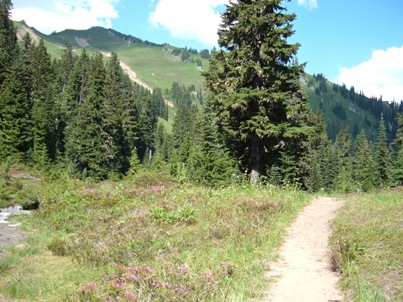
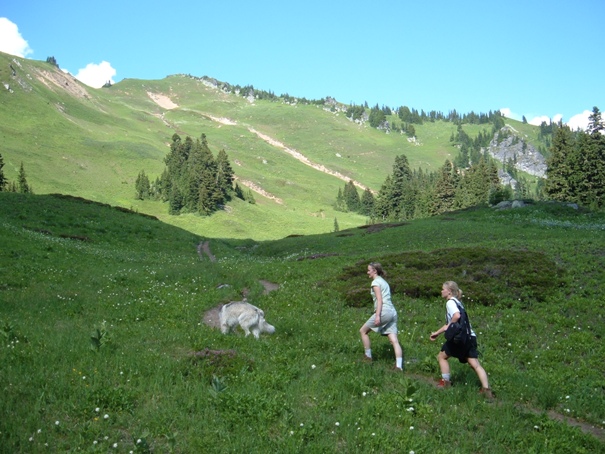
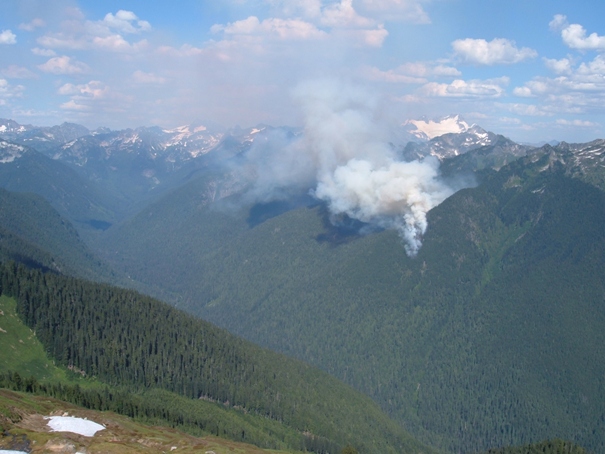
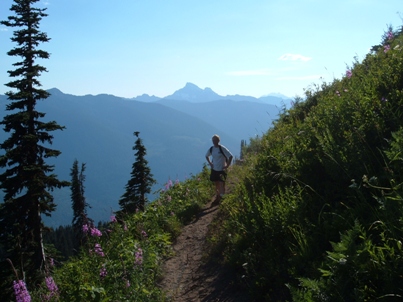
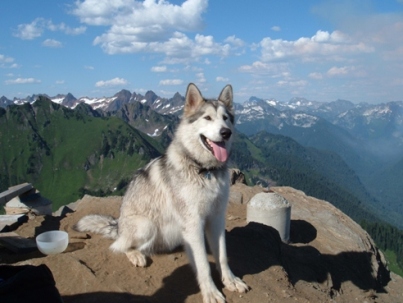
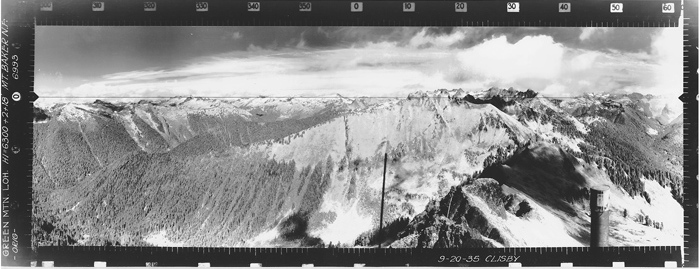
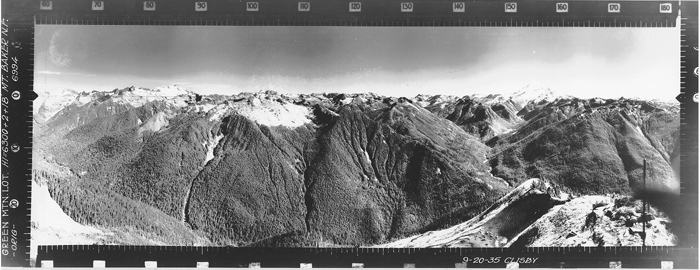
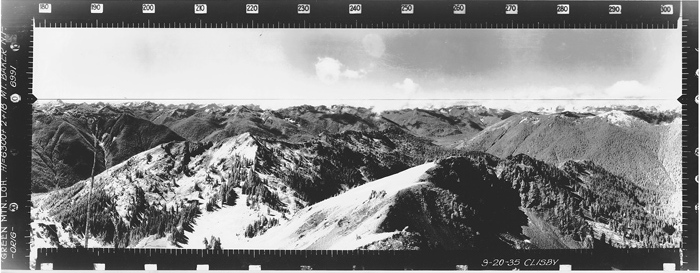
Looking North 1935
Looking Southeast 1935
Looking Southwest 1935
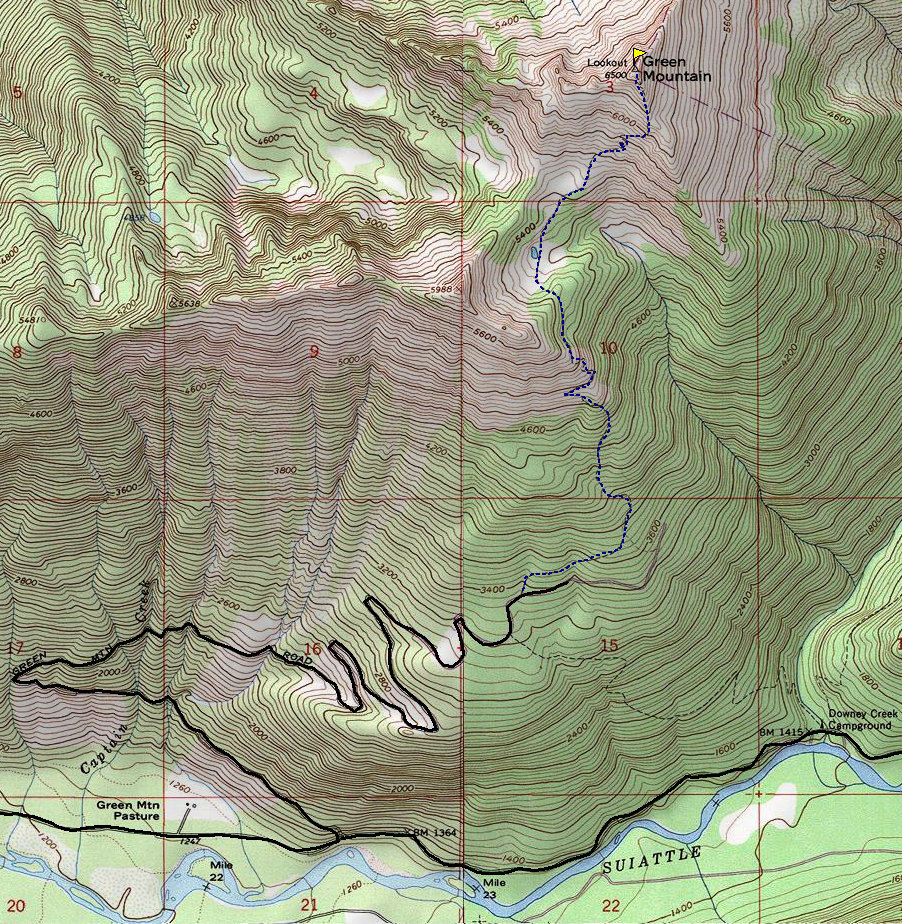

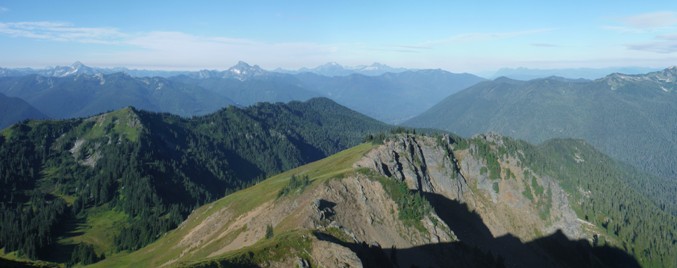

Looking North 2016
Looking Southeast 2016
Looking Southwest 2016
Lookout History:
The lookout was a camp from 1919 to 1933. In 1933, the Civilian Conservation Corps built the 14 by 14 foot L-4 style lookout. In 1942, a shake cabin was added just below in the summit (now gone). During WWII, the army utilized the lookout as an aircraft warning station. It was initially staffed year-round, 24 hours a day. However, harsh weather the first year convinced the army to scrap winter operations. Improvements were made in 1950 including a new roof and additional catwalk to three sides. Later years finished the catwalk and replaced shutters. The Forest service continued to use the lookout for fire detection until the mid-1980s, then it continued to serve various administrative needs until the mid-1990s. During this time period, increasing public interest and use led the forest service to begin staffing the Lookout with wilderness rangers, and to partner with volunteers for maintenance activities. In 1988, the National Park Service listed Green Mountain Lookout on the National Register of Historic Places. The Forest Service entered into an agreement in 1990 with the "Friends of Green Mountain" to work together to coordinate volunteer maintenance efforts. A short time later, the Suiattle River Road washed out. The staffing and visitors vanished but the lookout still got maintenance work including catwalk repairs and a new roof. But, by 1995, deteriorating foundation, handrails and catwalk forced the Forest Service to close the lookout to the public. The agency made plans for more extensive restoration requiring the use of motorized equipment such as helicopters and rock drills. Due to the location now being in a Wilderness Area, extra challenges existed. A 50K grant was awarded by the "Saving Americas Treasures" program. In 1999 & 2000 a contractor did the foundation work. Unfortunately, the new (poorly built) foundation was not able to support the heavy snowpack during the winter of 2001-2002. The extent of the damage necessitated the lookout be removed from its foundation in order for adequate repairs to be made. The Forest Service disassembled the lookout, numbered each piece, and removed it by helicopter in 2002. Although the Forest Service intended to return the lookout the following season, funding issues and severe fall floods in 2003 and 2006 delayed implementation. In 2009, a National Park Service crew completed the construction of the new foundation. The Forest Service flew the lookout parts back to Green Mountain, reassembled the building and rebuilt the catwalk.
Almost Removed Again!
In 2010, the interest group Wilderness Watch filed a lawsuit against the Forest Service seeking a declaratory judgment and injunction requiring the removal of the newly restored lookout from the Glacier Peak Wilderness. They asserted that the physical and administrative processes the Forest service used to remove and reassemble the lookout violated the Wilderness Act and the National Environmental Policy Act. (In 1968 the Glacier Peak Wilderness was expanded to include the summit area of Green Mtn.) A District Court agreed with Wilderness Watch and ordered the Forest Service to remove the lookout. The Forest Service was able to get an amended decision giving them time to determine how to move forward to implement the court orders. In 2013 Senators and State Reps introduced legislation that would amend the Washington State Wilderness Act by inserting the following: [...the designation of such lands as a wilderness area shall not preclude the operations and maintenance of Green Mountain Lookout....the Secretary of Agriculture, acting through the chief of the Forest Service, may not move Green Mountain Lookout from its current location on Green Mountain in the Mount-Baker-Snoqualmie National Forest unless the Secretary determines that moving Green Mountain Lookout is necessary to preserve the Lookout or to ensure the safety of individuals on or around Green Mountain.] President Obama signed the Green Mountain Lookout Heritage Protection Act, putting an end to years of uncertainty around the fate of the lookout. The legislation was championed by Sens. Patty Murray and Maria Cantwell and Reps. Suzan DelBene and Rick Larsen.
Letter from John E. Schwartz to the Darrington District Ranger in 1977 (abridged)
I served as the lookout on Green Mountain from about mid-July to mid-September 1928. The lookout had been manned about a week earlier that year but the individual assigned there suddenly resigned and I was offered the job. At that time I was working on a crew which was constructing the trail to Circle Peak. In those days there was no road up the Suiattle river so it was a matter of hiking long miles to reach Green Mountain and other points up the valley. For trips up river, personnel and supplies were usually hauled by car or truck to Sauk Crossing. At this point a dugout canoe was used to ferry people, and pack stock simply forded the river. There were no permanent improvements at the lookout site. An emergency ground wire telephone line was strung on trees and bushes along the trail to the summit. My living quarters was a small 8x10 wall tent with a fly extending out in front. I cooked over a campfire using an old World War I army mess kit. The camp was situated on the right among a small group of subalpine firs near the point where the trail leaves the ridge and descends to the basin south of the peak. A small firefinder was positioned on the rock at the summit. There was no shelter here and since I had no material with which to construct even a temporary one it was necessary to spend long hours each day sitting on a rock in the sun. I carried my portable telephone WWI surplus) back and forth between camp and the lookout so that I was always available for calls and to call out. water was obtained from the snowbanks on the NE side of the ridge. Firewood was easily obtained from dead material in the nearby thickets of fir and hemlock. In those days relatively few people visited areas as remote as Green Mountain. During my stay on the mountain I saw fewer then twenty people. These included two sheepherders, eight men in the U.S. GLO survey party and perhaps a half dozen Forest Service employees. Backpackers and wilderness recreationalist were seldom seen in the Suiattle country in those days. In contrast to the numbers of those days I encountered more people on Green Mountain on the single day that I hiked up to the peak in August 1975. One band of sheep grazed on Green Mountain in 1928. They were trailed in from the Wenatchee Forest and arrived on the mountain in late July. As nearly as I can recall they left about a month later or toward the latter part of August. The herders camped at the small lake in the basin just south of the main peak. The sheep grazed from the slopes south of the basin to those just below the lookout. Toward the end of the season they had worked around to the northeast to the lower slopes of Red Mountain. There were two herders and one camp tender. I believe the latter also serviced a sheep camp on Miners Ridge that summer.
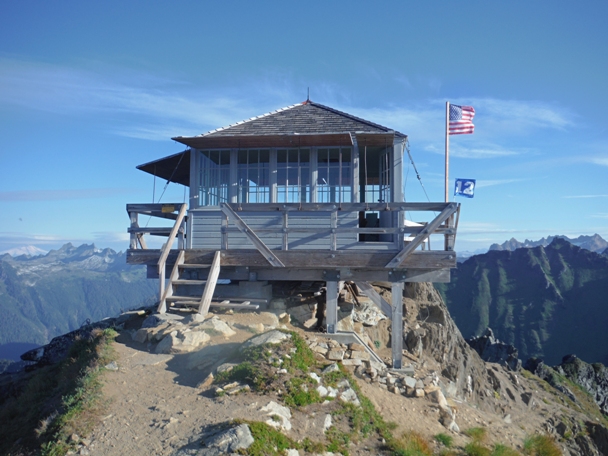
Green Mountain Lookout Year 2016
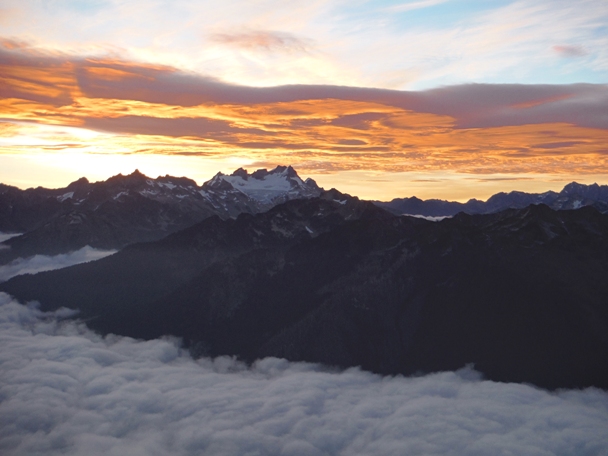
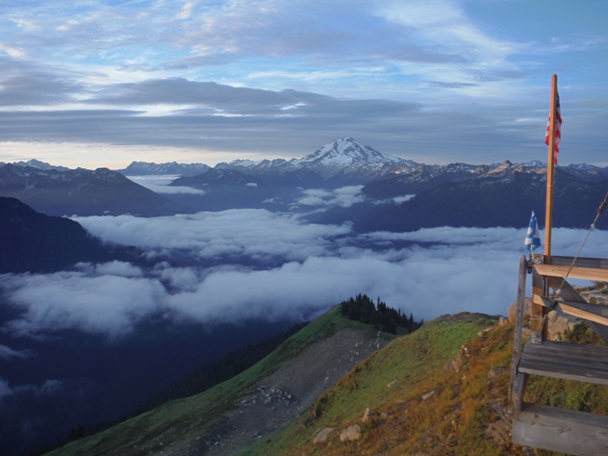
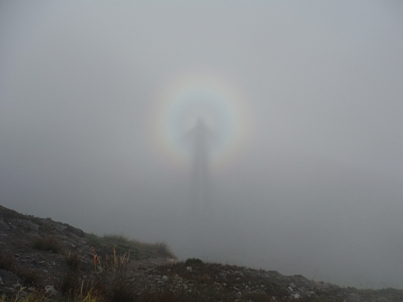
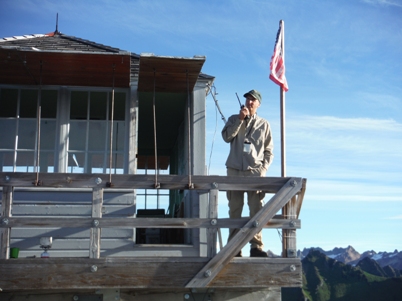
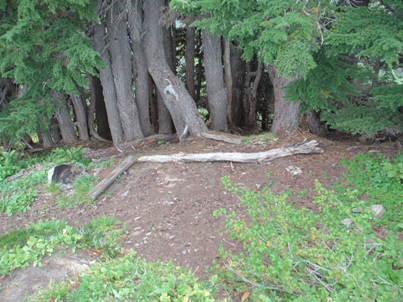
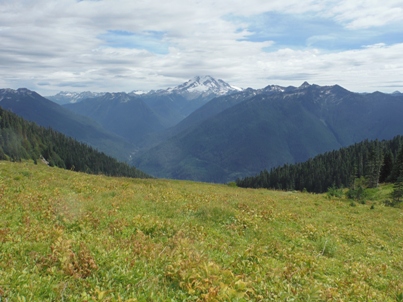
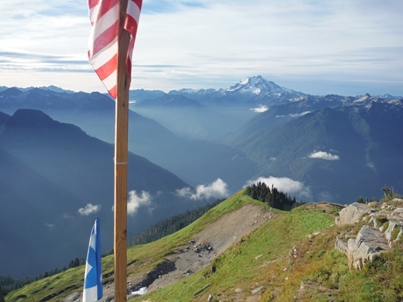

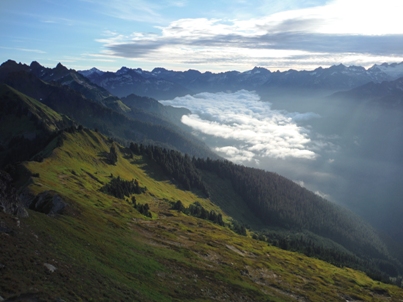
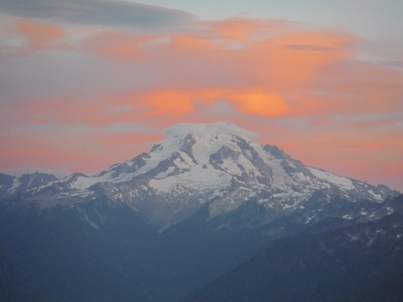
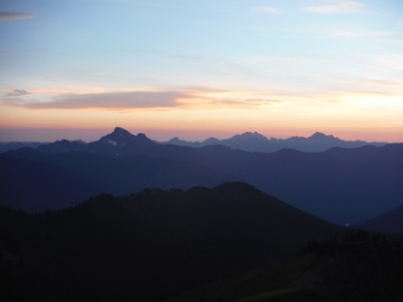
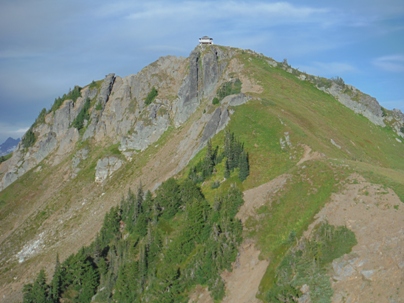
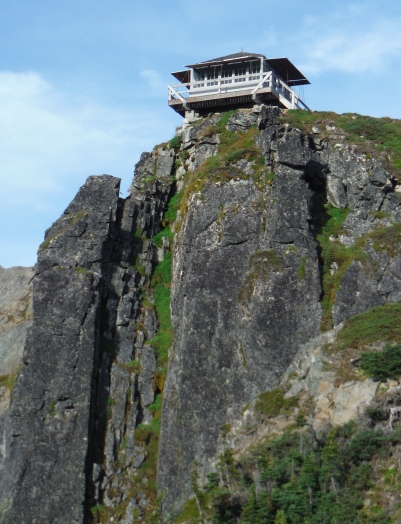
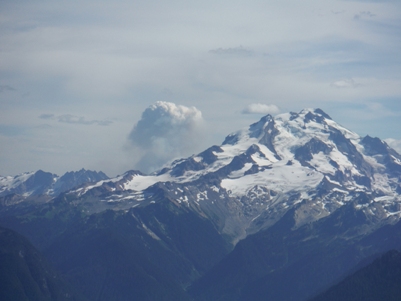
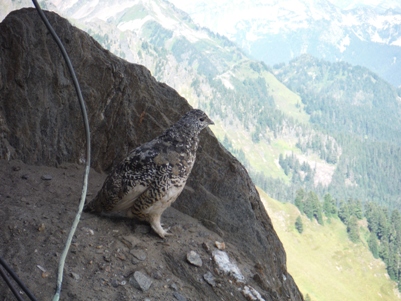
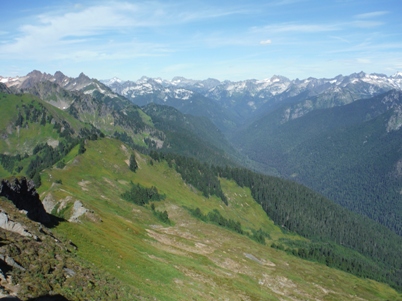
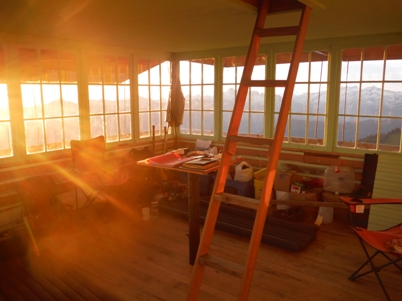
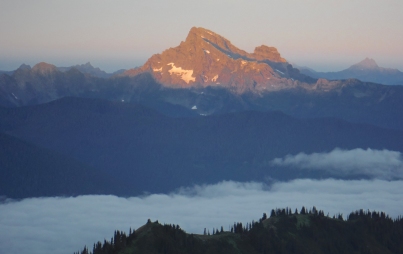
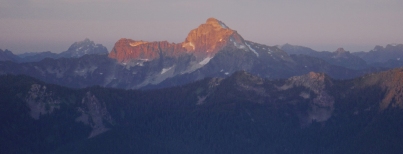
Saul Fire - Indian Creek Drainage 2016
Sunset with White Chuck, Three Fingers and Whitehorse Mtn.
Looking up to the lookout from the west ridge
Downey Creek Valley
Me as a volunteer steward for the weekend
Mount Pugh
Morning light on Glacier Peak
Original lookout campsite on ridge from 1919 to 1933
White Chuck Mountain
Sunrise over Dome Peak
Brocken Spectre
Ptarmigan under the lookout
































